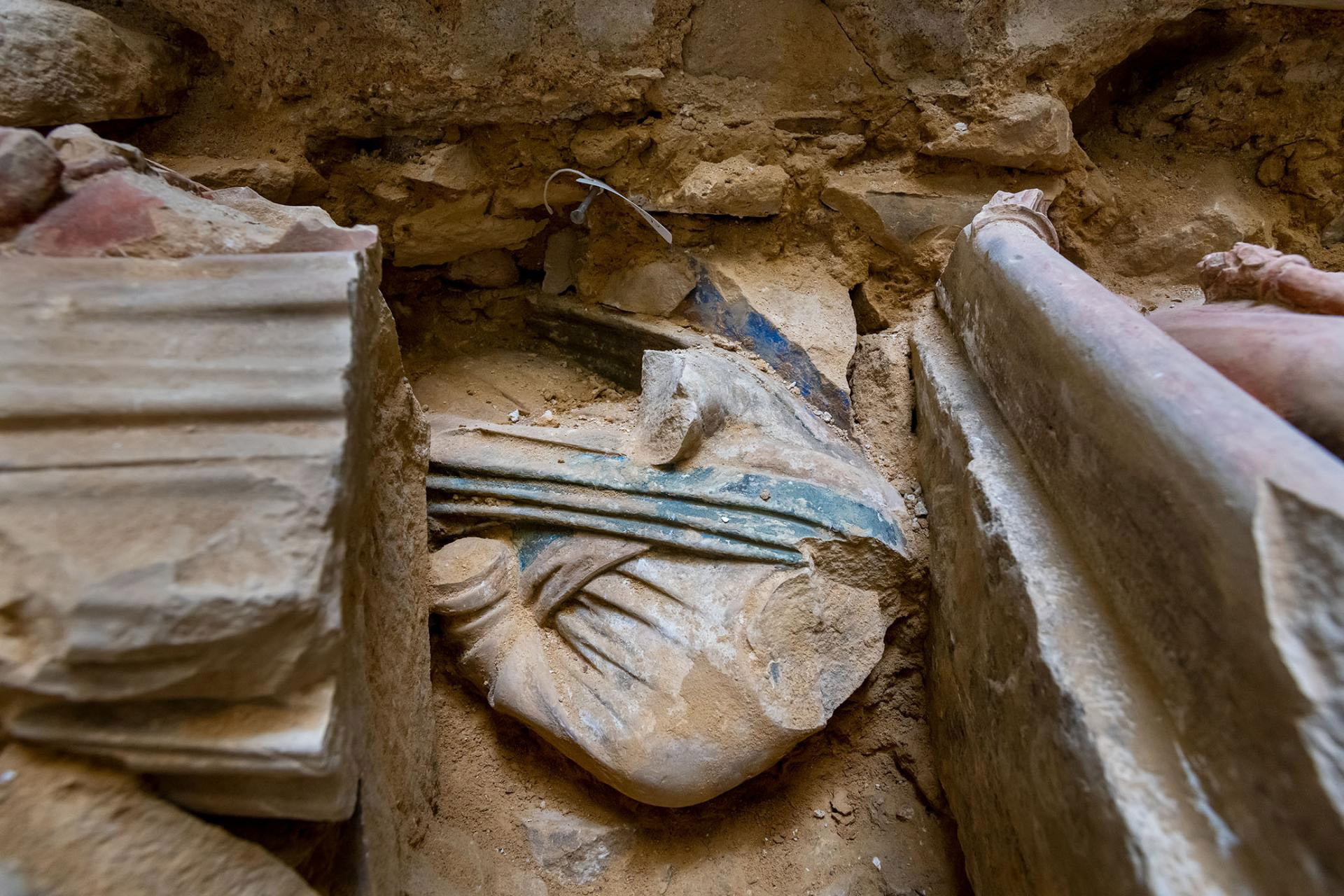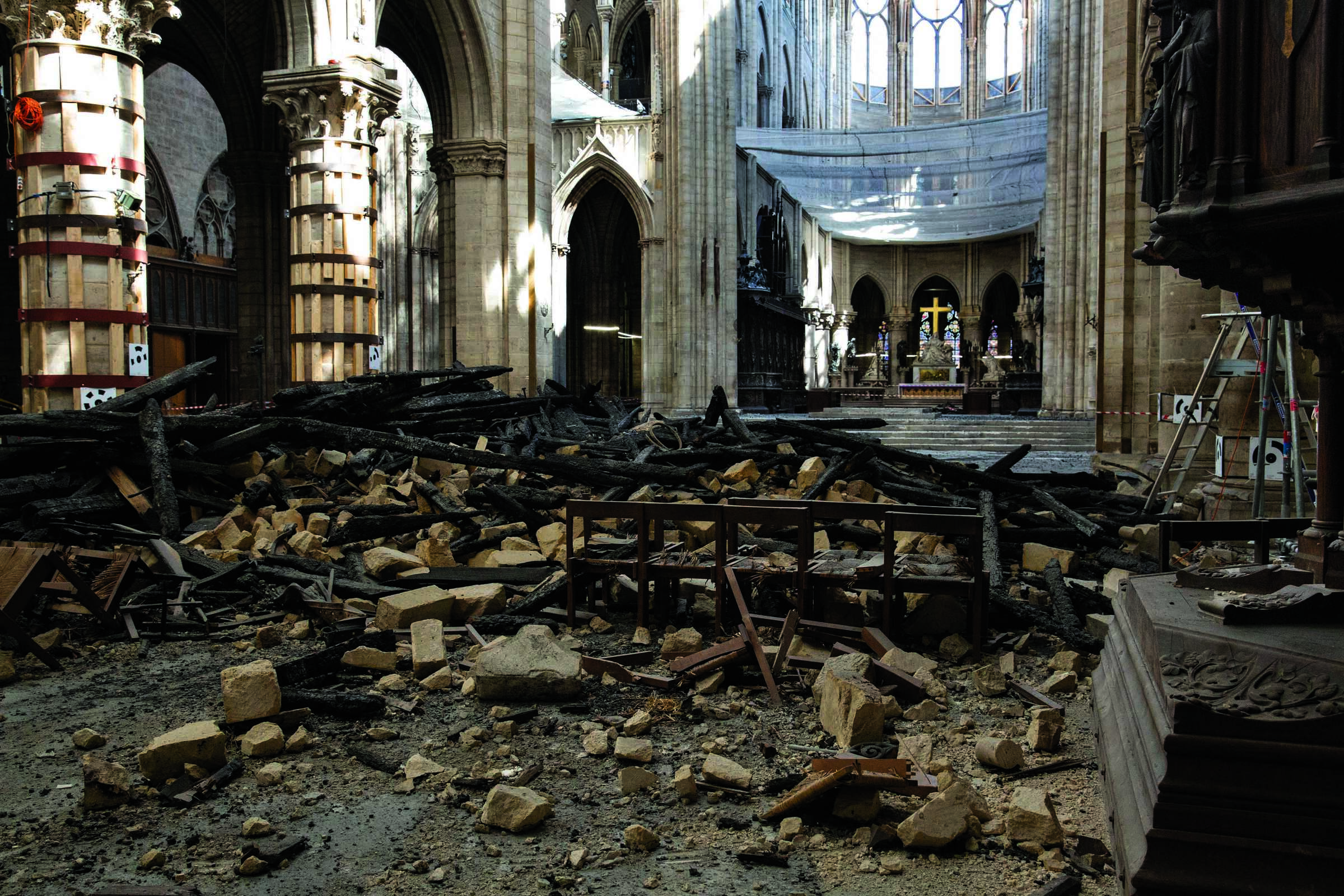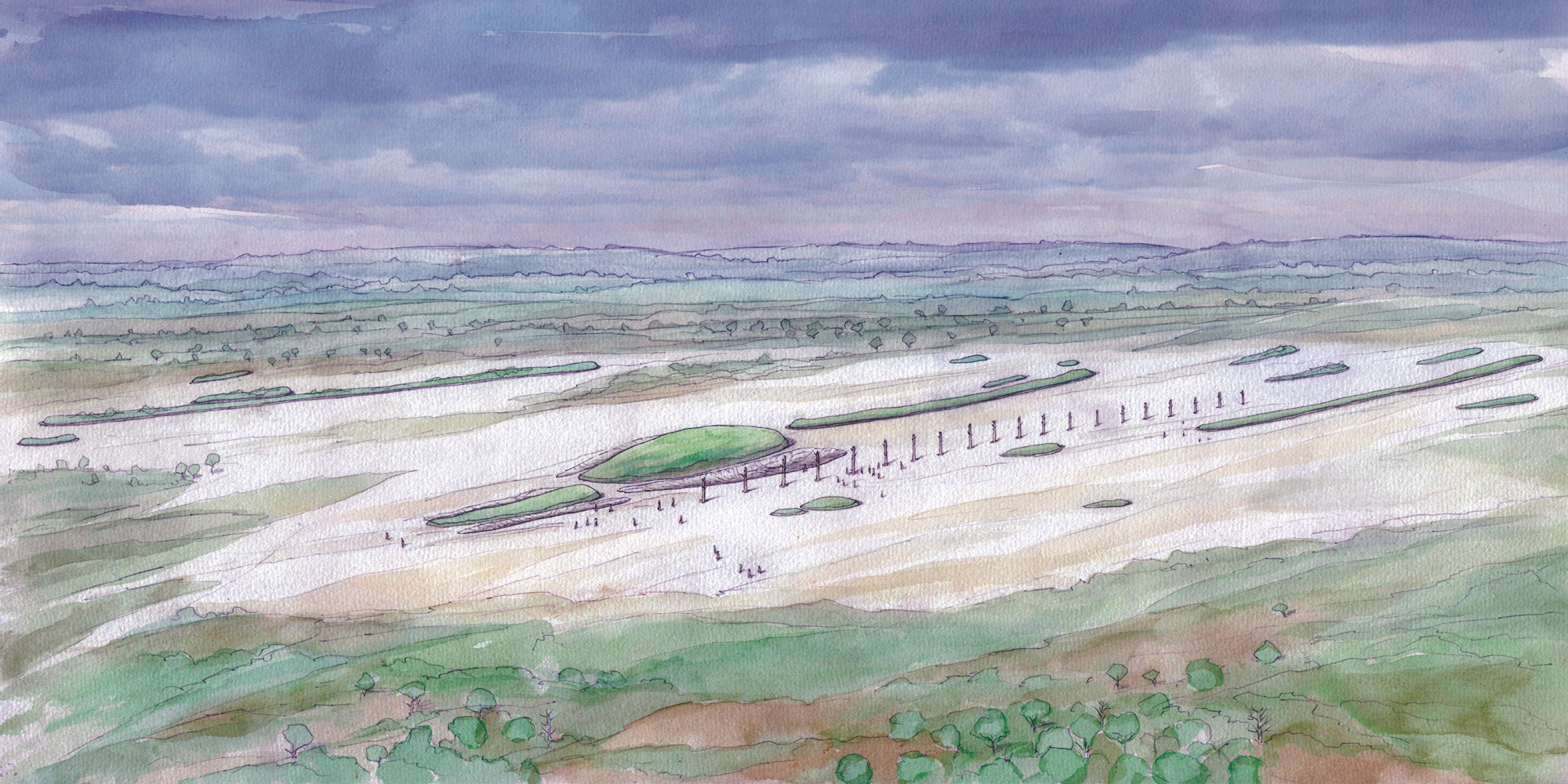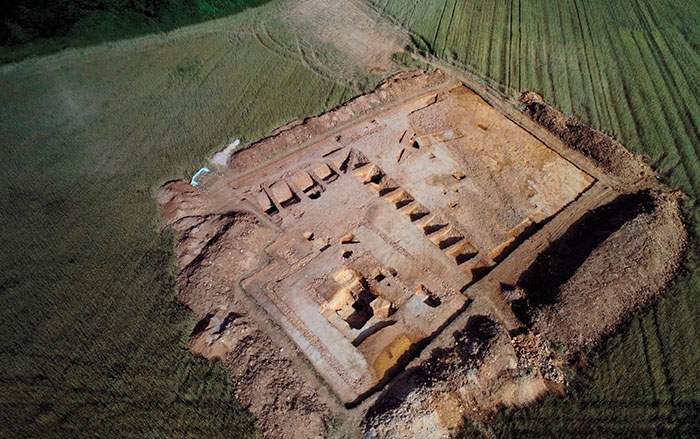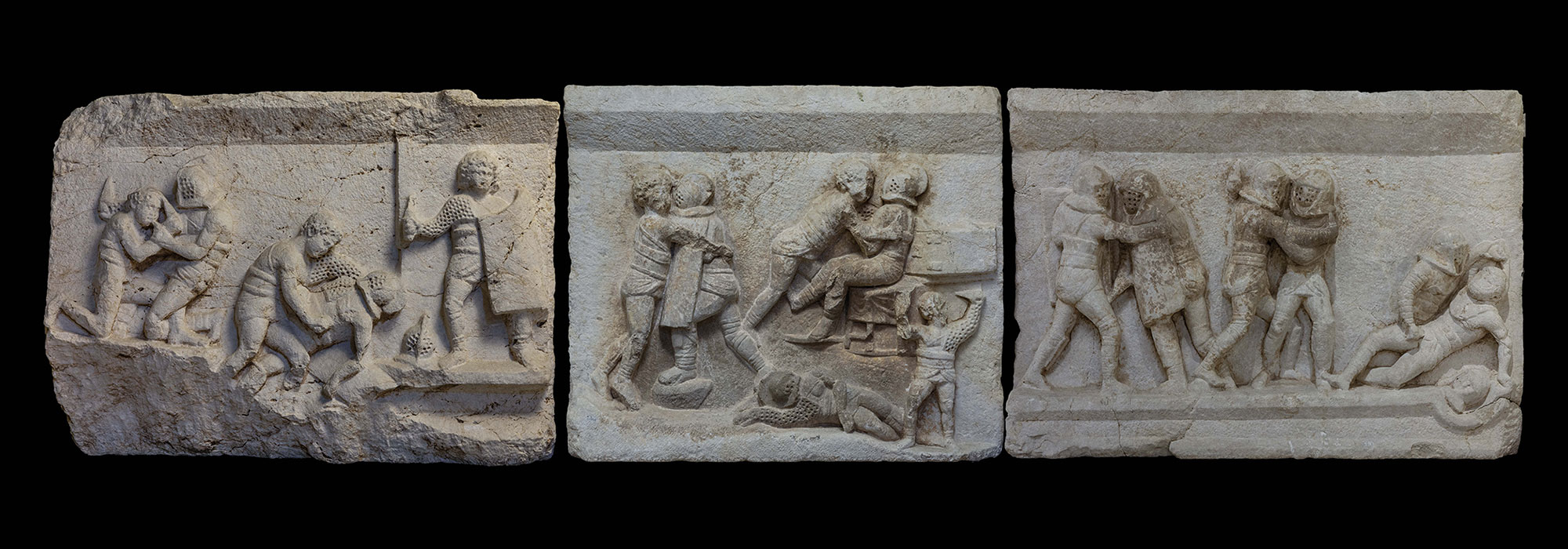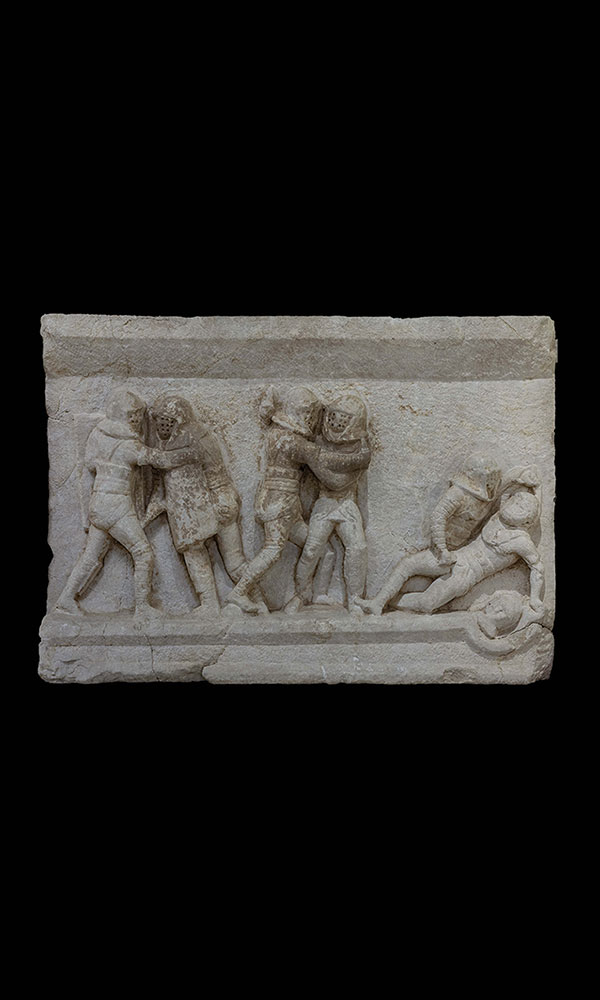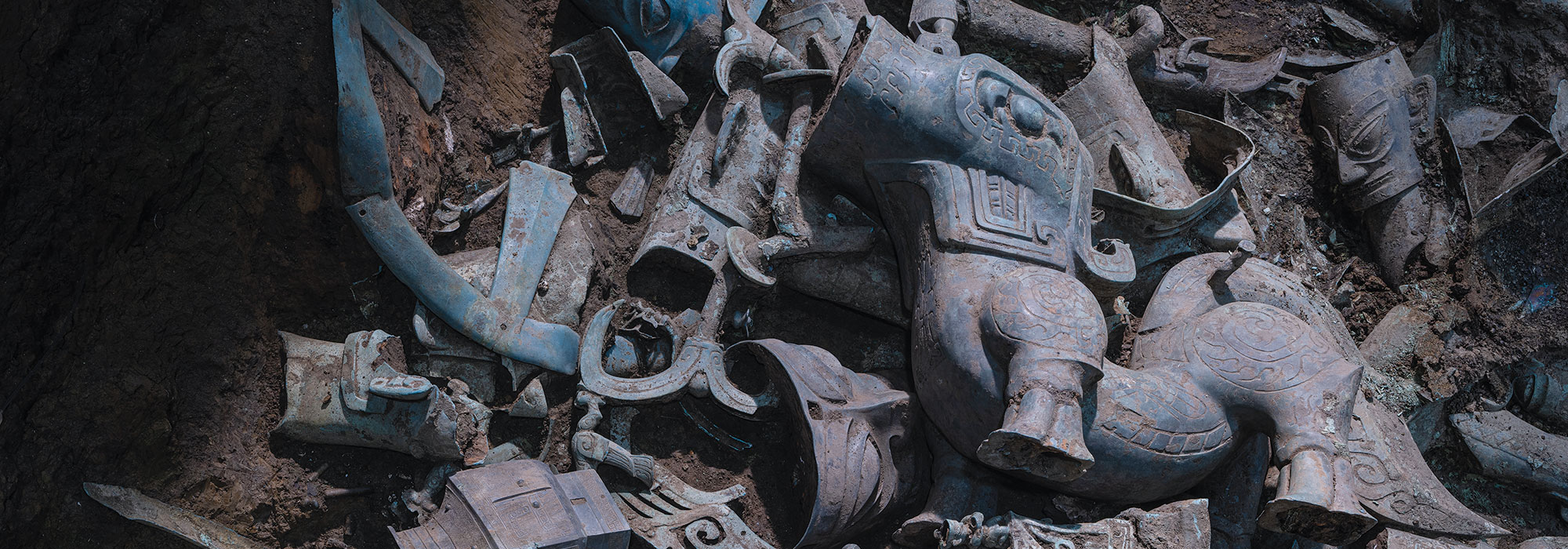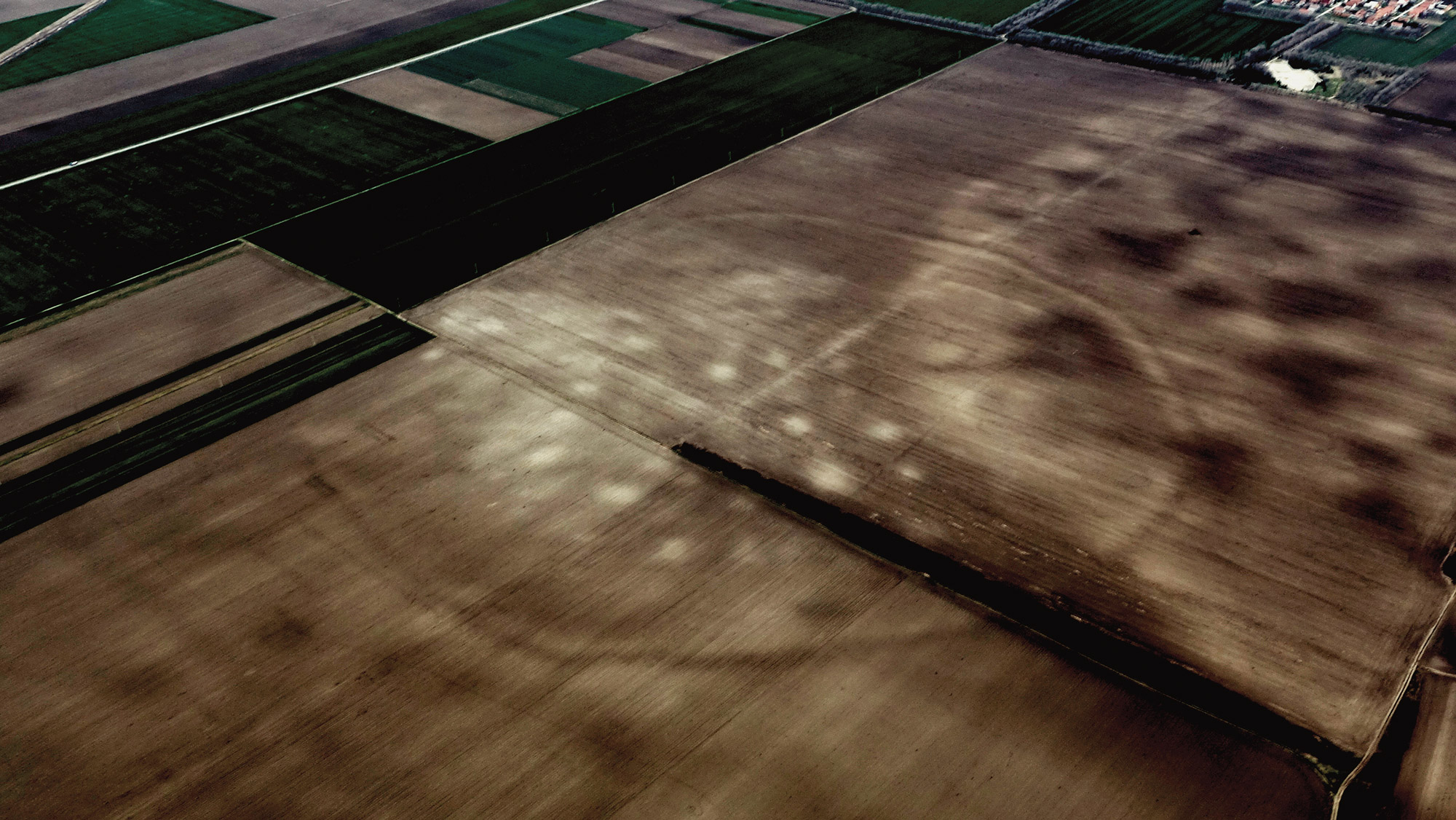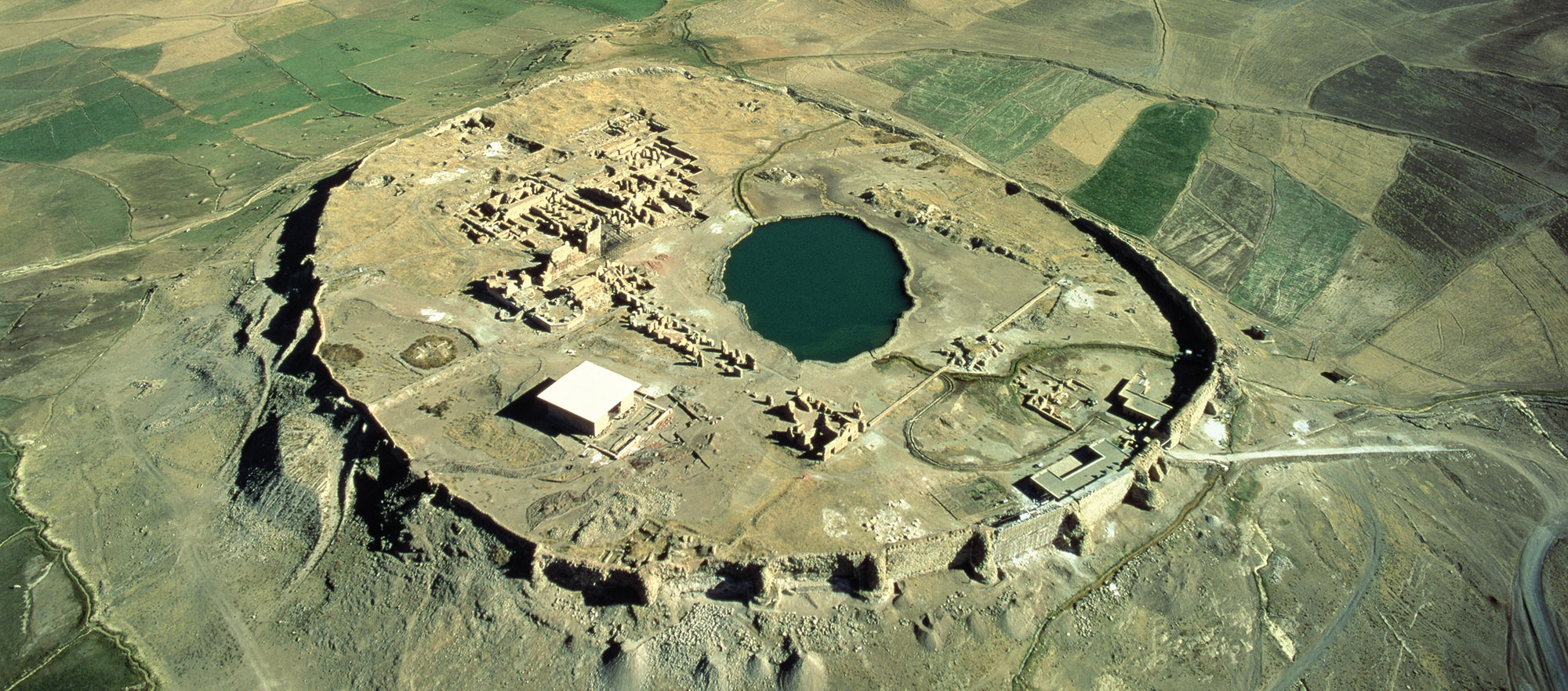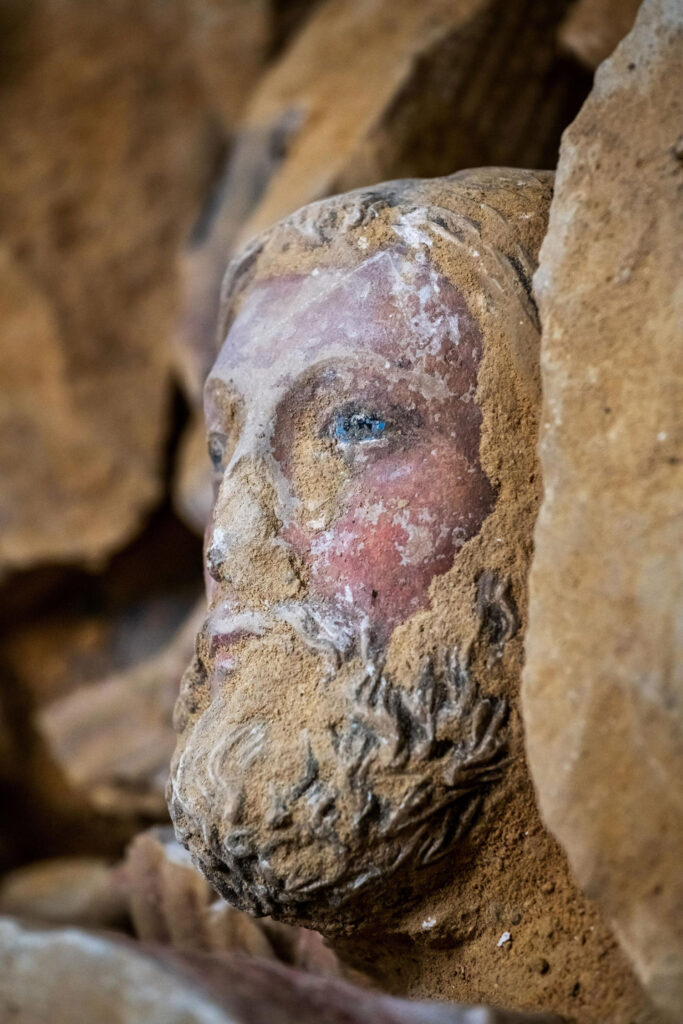
PARIS, FRANCE—According to an ARTNews report, archaeologists have uncovered some 1,035 fragments of historic artworks beneath Notre Dame Cathedral, which was engulfed in flames and nearly destroyed in spring of 2019. The five-year reconstruction process following the conflagration, however, has given archaeologists a unique and unprecedented opportunity to dig underneath the church, which was built beginning in 1163. Beginning in February of 2022, a team from the French National Institute of Preventive Archaeological Research were given permission to excavate only 16 inches beneath the nearly 900-year-old cathedral's stone floor—the same depth as the foundations for scaffolding required for construction work. The artworks they recovered include life-sized head and torso fragments of anthropomorphic limestone statues, a thirteenth-century jubé, or partition used to separate a choir from its audience, and a lead sarcophagus likely belonging to French Renaissance poet Joachim du Bellay. The researchers also found remnants of medieval construction methods, including rope holds likely used for transport along the Seine River and iron clamps used to bind stones, some of which date to the cathedral's initial construction, confirming the structure as the first known Gothic cathedral to use iron as a building material. The team also found nearly 100 graves, many of them belonging to unidentified individuals, increasing Notre Dame's total number of burials to more than 500. The site is set to reopen to the public on December 8. To read more about the excavations undertaken at the famous cathedral, go to "Exploring Notre Dame's Hidden Past."


